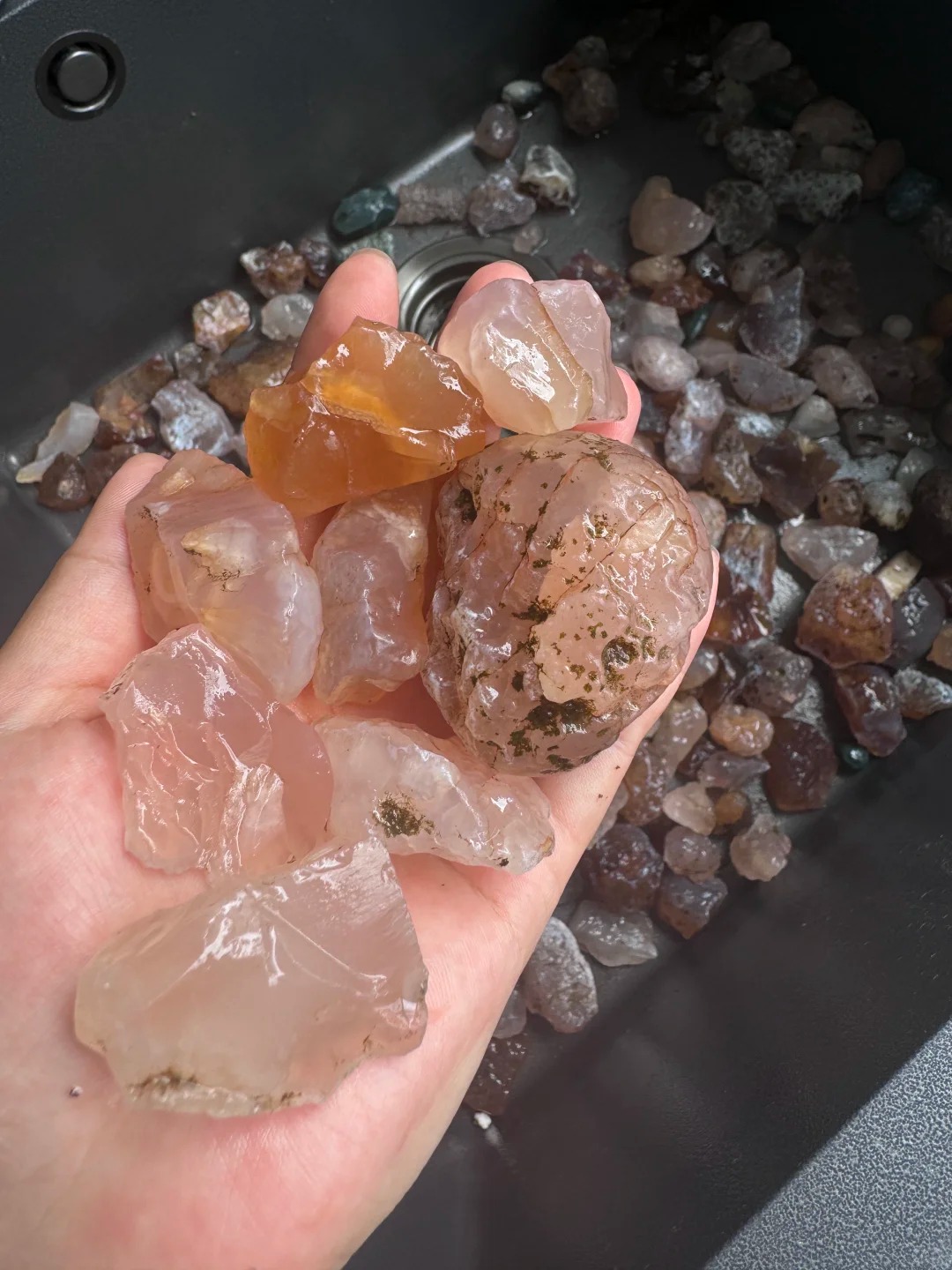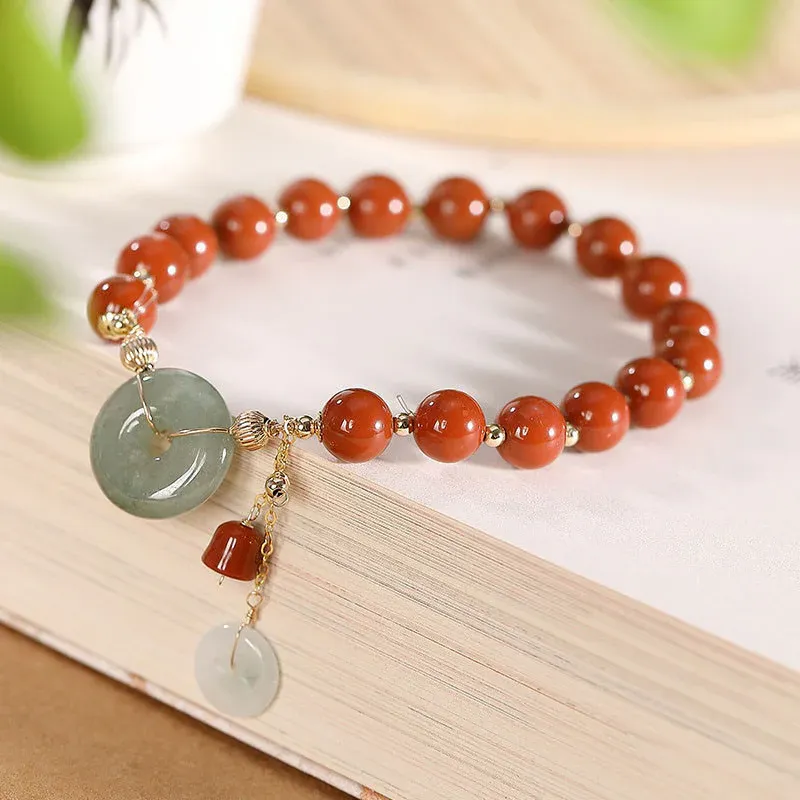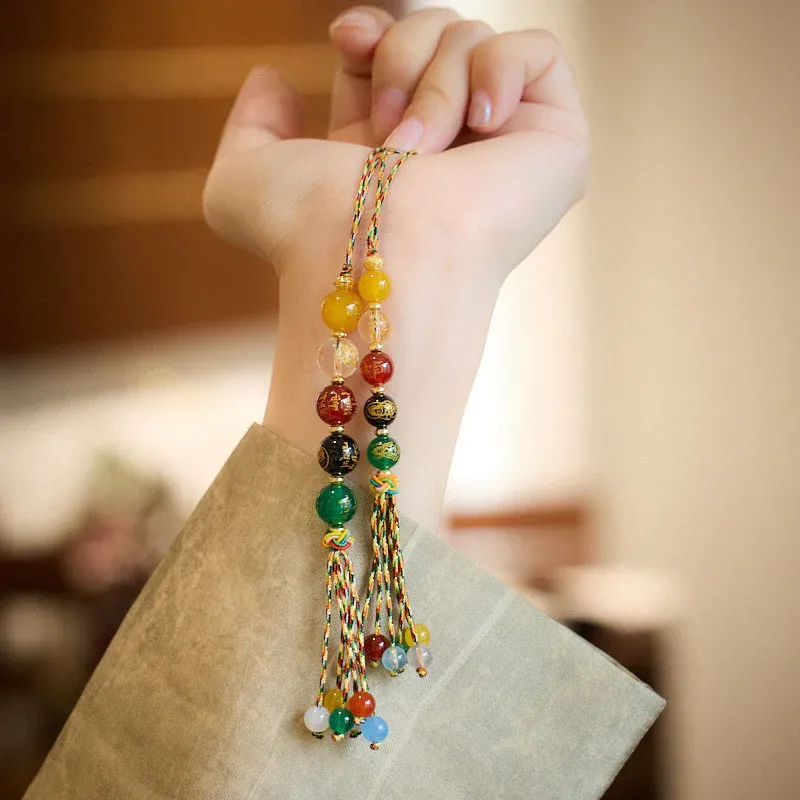The Versatile Uses and Spiritual Significance of Agate
Agate, also known as "Ma Nao" or "Ma Nao," is a variety of chalcedony, often mixed with opal and cryptocrystalline quartz, forming banded masses. It has a hardness of 6.5–7 on the Mohs scale, a specific gravity of 2.65, and exhibits layered colors, ranging from translucent to opaque.
Basic Characteristics:
Agate's primary structure is trigonal. It commonly appears in dense block forms with various shapes like mammillary, botryoidal, and nodular, with the most common being concentric bands. Agate consists of chalcedony with different colors, often in green, red, yellow, brown, and white shades.
Formation and History:
Agate has formed over a billion years ago, primarily through volcanic activity. As magma cooled, gas bubbles trapped within solidified rock formed cavities later filled with silica-rich fluids that crystallized into agate.
Cultural Significance:
In ancient times, it was often crushed, ground, and mixed with solvents to make mineral pigments for painting. It was also used in medicinal applications. Agate has long been regarded as a symbol of beauty, happiness, and wealth due to its vibrant hues and toughness.
Varieties of Agate:
Agate comes in many varieties, including:
- Banded Agate (with concentric bands)
- Moss Agate (with inclusions resembling plants)
- Castle Agate, and many more.
Notable Types of Agate:
- Alashan Agate (from Inner Mongolia)
- Patagonia Agate
- Mexican Agate
- Scottish Agate
- Michigan Agate
- Bulgarian Agate
Chemical Composition:
Its primary component is silicon dioxide (SiO₂), often alternating with hydrated silica (silica gel). The colors in agate are due to trace amounts of metal oxides like iron, cobalt, and nickel.
Major Producers:
Countries like China, India, Brazil, Madagascar, the U.S., Egypt, and Australia are prominent agate producers.
Uses:
Throughout history, agate has been used in various applications such as:
- Jewelry: Agate is prized for its beauty and is often used in necklaces, rings, and bracelets.
- Amulets and Talismans: In many cultures, agate has been used as a protective charm against evil and misfortune.
- Paint Pigments: Ground agate was historically used as a pigment for paintings, particularly in religious art like Thangka and Buddhist murals.
- Industrial Tools: Agate is utilized in precision instruments like bearings, pestles, and mortars due to its hardness.
- Medicinal Use: In Tibetan medicine, it has been recorded as a traditional remedy.
- Mythological Associations: According to Greek mythology, agate formed from the fingernail clippings of the goddess Aphrodite, reinforcing its associations with love and beauty.
Identification of Agate:
Natural agate is distinguished by its vibrant, naturally occurring colors and well-defined banding patterns. Artificially dyed agate can be identified by using infrared spectroscopy.
Value and Grades:
The value of agate is determined based on factors like size, color intensity, transparency, and the absence of impurities like cracks or inclusions. The most valuable varieties are often those that display rare or intricate patterns and colors.
Maintenance and Care:
Agate should be kept away from harsh chemicals and heat sources to maintain its luster and prevent cracking. Occasional soaking in purified water helps retain its moisture and beauty.
Uses of Agate:
Agate has long been regarded as a symbol of beauty, happiness, good fortune, and wealth. Its striking appearance, hardness, and rarity have earned it the title of "crown jewel" among gemstones. Ancient legends claimed that agate possessed the mystical power to make people invisible, which further elevated its status and led to its widespread admiration throughout the centuries.
Agate is not only cherished as a beautiful ornament but also serves as an important tool in spiritual practices and Buddhist rituals. In Buddhism, agate is one of the Seven Treasures, symbolizing protection and serving as a talisman to ward off evil. It represents love, kindness, and hope, often used for spiritual purification, helping the wearer dispel negative energy and achieve inner peace and balance. Many practitioners use agate as a meditation tool, placing it nearby or holding it in hand to enhance mindfulness and spiritual enlightenment through its energetic properties.
In Western magical traditions, agate is also believed to possess special spiritual powers. A common practice involves writing one's wish on a piece of paper, folding it, and placing it into an agate treasure bowl. After meditating over it, the paper is burned to release the wish into nature, aided by the purifying energy of fire. This "energy purification" ability of agate is also thought to assist in attracting wealth and balancing karma, making it a valuable tool for those pursuing a conscious lifestyle.
Agate is not just admired for its aesthetics; its durable nature makes it a popular material for both ornamental and practical purposes. In summer, wearing agate is fashionable and cooling, providing relief from heat and preventing sunstroke. In the realm of craftsmanship, agate is prized for its vibrant colors and intricate beauty, often crafted into exquisite Buddha statues, spiritual jewelry, and items that symbolize the Zen lifestyle, embodying deep spiritual meanings. These pieces are not only a feast for the eyes but also serve as tools for spiritual growth, helping individuals maintain inner tranquility and mindfulness in their daily lives.
Additionally, agate has been widely used in the production of precision instruments, such as bearings, pestles, and mortars. Due to its vivid colors, ancient artisans would crush and grind agate, mixing it with solvents to create long-lasting mineral pigments for painting, such as in Thangka art and Buddhist murals. These artworks not only display visual beauty but also carry the power to inspire spiritual awakening, making them a significant part of Buddhist culture.
In terms of medicinal uses, agate is also documented in Tibetan medicine, recognized for its healing properties and ability to balance the body's energy, thus promoting overall health. Agate, used as a meditation accessory, helps practitioners heighten mindfulness, reaching deeper levels of spiritual awakening and nurturing profound personal growth.
As a versatile gemstone, agate has transcended its role as a mere decorative item or industrial material. In Buddhist culture, it acts as a conduit for spiritual enlightenment, helping practitioners grow spiritually, balance karma, purify energy, and foster mindfulness and awareness. By doing so, it supports individuals in leading a more conscious and abundant life.
These diverse applications and symbolic meanings have solidified agate’s place in spiritual practices across the world. Its role in Buddhist artifacts, spiritual jewelry, and mindfulness products underscores its recognition as a powerful spiritual tool.





